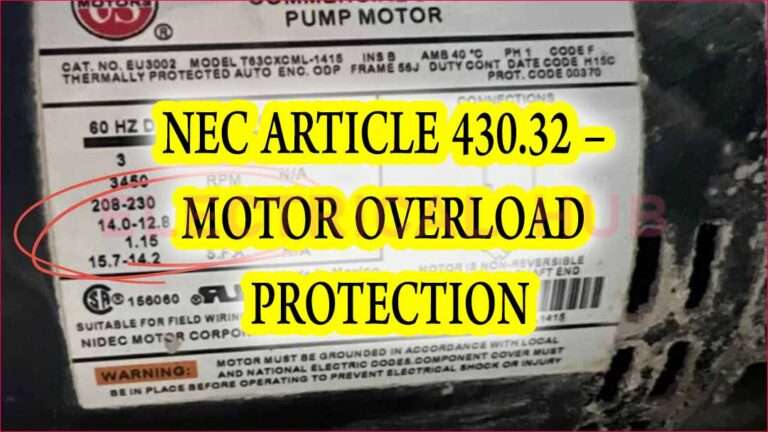Electrical Wire Gauge Calculator: A Simple Guide for Safe and Accurate Wiring
Choosing the right wire size is essential for any electrical system. A wire that is too small can overheat, drop voltage, or even cause equipment failure. A wire that is too large increases cost and becomes hard to manage. This is where an electrical wire gauge calculator becomes a reliable tool. It helps you select the correct wire gauge based on current, voltage, material, and distance. This guide explains how it works, why it matters, and how you can use it with confidence.

Table of Contents
An electrical wire gauge calculator removes guesswork. It gives you the correct wire size for your circuit in seconds. Electricians, homeowners, hobbyists, and engineers use it because it improves safety and accuracy. Instead of checking long charts manually, the calculator does the math and shows the recommended American Wire Gauge (AWG) size right away. Make your task simple with our online tool electrical cable size calculator
What Is an Electrical Wire Gauge Calculator?
An electrical wire gauge calculator is a digital tool that determines the correct wire size for a specific electrical load. It uses key inputs such as current (amps), voltage, conductor material, and distance. These factors affect how much heat the wire can handle and how much voltage drop occurs along the run. Explore our professional online tool for quick calculations kw to cable size calculator
Wire sizing is important because every conductor has limits. A wire can only carry a certain amount of current before it becomes unsafe. The calculator applies standard formulas to calculate the minimum acceptable gauge, then shows the closest AWG size.
Electrical Wire Gauge Calculator
Electrical Wire Gauge Calculator
Calculate minimum wire size based on current, voltage drop, length, and material.
– Select system type (single/three-phase).
– Enter voltage, power factor, load current, cable length, and permissible voltage drop.
– Choose copper or aluminum conductor.
– Click “Calculate” to see the minimum required cross-sectional area and suggested AWG sizes.
– Compare with code tables for ampacity and installation corrections.
Formula check: ΔV = I × R × length factor. R = ρ/A. For single-phase, ΔV ≈ 2·ρ·I·L/A. For three-phase, ΔV ≈ √3·ρ·I·L/A. Area A is solved from ΔV target.
Why Wire Gauge Matters
Wire gauge is the thickness of the wire. Thicker wires have lower gauge numbers. For example, 8 AWG is thicker than 12 AWG. Choosing the right gauge prevents overheating and power loss. It also ensures stable performance for motors, appliances, lighting, and sensitive electronics.
An electrical wire gauge calculator helps maintain safe operation. It reduces risk of melted insulation, circuit breakers tripping, and voltage issues. Correct sizing also increases efficiency and lowers energy loss. Experience fast and accurate results using our online tool cable size calculator uk
Factors Used in an Electrical Wire Gauge Calculator
Current (Amperage)
The most important input is the current. Higher current requires a thicker wire. For example, a 15-amp load can use 14 AWG in many cases, but a 40-amp load needs 8 AWG or larger. The calculator checks this automatically.
Voltage
Voltage plays a role in how much drop is acceptable. Lower-voltage systems, such as 12V or 24V DC, are more sensitive to voltage drop. Higher voltages, such as 120V or 240V AC, can tolerate more drop. This affects the required gauge size.
Distance of the Run
Longer wire runs increase resistance. More resistance means more voltage drop. A calculator can compensate by increasing the recommended wire size. For example, a 100-foot run may need a thicker wire than a 20-foot run for the same current.
Material (Copper or Aluminum)
Copper has lower resistance than aluminum. It carries more current at a smaller gauge. Aluminum requires thicker conductors to handle the same load. The calculator adjusts for these differences. Calculate instantly with our smart online tool cable size calculator australia
Common Wire Gauge Sizes and Their Uses
The table below shows common AWG sizes used in residential and commercial wiring. This helps you understand the results you may get when using an electrical wire gauge calculator.
| AWG Size | Typical Ampacity (Copper) | Common Uses |
|---|---|---|
| 14 AWG | 15A | Lighting circuits, small loads |
| 12 AWG | 20A | Outlets, small appliances |
| 10 AWG | 30A | Water heaters, small motors |
| 8 AWG | 40A | Electric ranges, AC units |
| 6 AWG | 55A | Feeders, subpanels |
| 4 AWG | 70A | Large subpanels, heavy loads |
| 2 AWG | 95A | Service feeders, large equipment |
| 1/0 AWG | 150A | Main service, battery banks |
This chart is a helpful reference, but a calculator gives more accurate results because it considers distance and voltage drop.
How Voltage Drop Affects Wire Size
Voltage drop happens when electricity loses some of its pressure as it travels through the wire. This is normal, but too much drop causes motors to overheat and lights to dim. The accepted limit is usually 3% for branch circuits and 5% for full circuits. Start using our easy-to-use online tool earthing cable size calculator
An electrical wire gauge calculator uses voltage drop formulas to maintain this limit. If the voltage drop exceeds the safe threshold, it increases the wire size automatically.
For example:
- A 20-amp circuit at 120V running 15 feet may use 12 AWG.
- The same circuit running 120 feet might need 8 AWG to control voltage drop.
This is why calculators are more reliable than static charts.
How to Use an Electrical Wire Gauge Calculator
Using the calculator is simple. You enter a few details, and it gives you the correct wire gauge. The process usually includes these steps:
Enter the System Voltage
Choose between 120V, 240V, 12V, 24V, or the voltage used in your system. Lower voltages need thicker wires for the same distance.
Enter the Current (Amps)
This is the load you expect to carry. You can find it on the device label, breaker rating, or equipment specification sheet. Get instant results with our online tool earth cable size calculator
Enter the Distance
This is the total length of the wire from the power source to the load. Always include both directions for DC systems when required.
Select the Conductor Material
Choose copper or aluminum. This affects resistance and ampacity.
Review the Suggested AWG Size
The calculator shows the minimum wire gauge needed. It may show more than one option depending on voltage drop, maximum ampacity, and safety factors.
Benefits of Using an Electrical Wire Gauge Calculator
Improves Safety
Correct wire sizing prevents overheating, fire hazards, and equipment damage. A calculator ensures that the wire can handle the expected load.
Saves Time
Instead of reading long charts or using formulas, the calculator provides instant results. This is helpful for electricians and DIY users.
Reduces Cost
Oversizing wire can be expensive. The calculator helps you select the right size without wasting money on thicker conductors. Access our powerful online calculator now star delta motor cable size calculator
Ensures Compliance
Many electrical standards require proper wire sizing. Calculators follow NEC-based ampacity values and voltage drop guidelines.
Better Performance for Devices
Motors, inverters, solar systems, and batteries work better with correctly sized wires. It reduces flickering, overheating, and loss of efficiency.
Common Applications
An electrical wire gauge calculator is helpful in many wiring tasks. Some common uses include:
- Home electrical circuits
- Solar panel installations
- Battery banks and inverters
- RV and boat wiring
- HVAC equipment
- Workshop tools and machinery
- Subpanel feeders
- Outdoor lighting systems
- Low-voltage DC applications
Each of these systems has different current levels and distances. A calculator ensures accuracy for all of them. Try our free online tool today ev charger cable size calculator
Mistakes to Avoid When Selecting Wire Gauge
Ignoring the Distance
Many people choose wire size based only on current. Distance plays a major role. Always include it.
Using Aluminum Without Adjusting Gauge
Aluminum requires thicker wires. A calculator automatically corrects this.
Forgetting Future Load Expansion
Some loads increase over time. Adding a safety margin helps avoid rewiring later.
Mixing Copper and Aluminum
These metals expand differently. Always use proper connectors when mixing them.
Final Thoughts
An electrical wire gauge calculator is one of the simplest and most effective tools for selecting the correct wire size for any electrical project. It gives you accurate results based on current, voltage, distance, and material. This saves time, improves safety, and ensures your electrical system performs as expected. Whether you’re doing home wiring, working with solar systems, or installing a new appliance, a wire gauge calculator helps you make the right decision every time. Use our online tool 3 phase cable size calculator
Follow Us on Social:
Subscribe our Newsletter on Electrical Insights to get the latest updates in Electrical Engineering.
#ElectricalWireGaugeCalculator, #WireGaugeGuide, #ElectricalSafety, #HomeWiringBasics, #WireSizeCalculator, #ElectricalDIY, #WiringStandards, #CircuitSafety, #GaugeCalculation, #ElectricalTools





